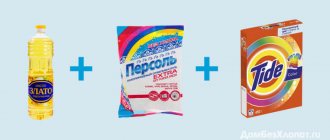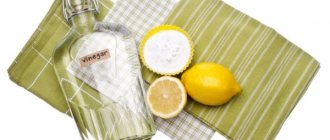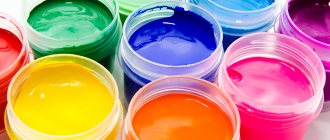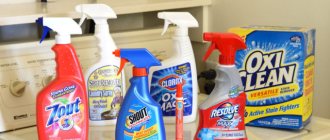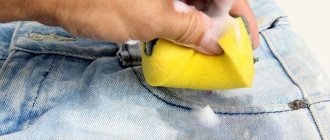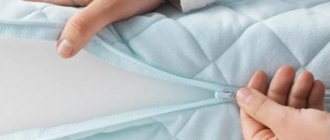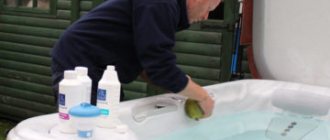Solidol is a thick beige or brown oil that is used for medical and technical purposes. The components of grease are petroleum oil, calcium soap and fatty acids.
Anyone who has ever encountered grease oil knows that a stain caused by grease oil can only be removed with titanic efforts. It is possible to remove traces of oil, but you must immediately prepare for the fact that the wash will take a long time.
Traces of grease are greasy stains that also begin to dry out over time. Most often, the work clothes of men who repair cars in the garage get dirty. But you can put a grease stain on your clothes in absolutely everyday conditions: when getting out of a taxi, opening the door, or accidentally touching a soiled instrument.
It is very disappointing to stain clothes with grease, especially if it was a new item that could last for a long time. But if you are ready to declare a fight against greasy grease stains, then arm yourself with several effective folk remedies that give good quality clothes a second chance.
The nature of solid oil stains
A grease stain on jeans or a jacket is the remains of a grease, widely used for preserving mechanisms and processing certain parts. From a chemical point of view, grease is a product of mixing thick industrial oils and calcium soap. Color – from yellowish to rich amber. It cannot be washed off with water, this is an advantage for mechanisms and a disadvantage for humans.
All solid oils are divided into:
- fatty origin;
- synthesized.
Compositions are used in consistency from liquid to jammy. This group also includes fat-based graphite lubricants.
It is clear that if it gets on clothing, it is difficult to remove the remaining stain. To such an extent that after processing the fabric structure and dye can be destroyed.
How to wash grease from silk clothes
Silk is a very delicate material. Aggressive agents and hot water are contraindicated for him. The method below is suitable for silk and other fussy materials, as well as dark clothes.
Mix ammonia and glycerin in a 1:1 ratio in a small container. Wet the grease stain well and leave to soak for 30 minutes. Then rinse thoroughly in cold water, but do not rub or wrinkle the fabric.
After soaking dark, delicate fabrics with a mixture of ammonia and glycerin, additionally rub them with a cotton pad with ammonia.
Advice! If you are washing not the entire item, but a separate area, place a light-colored rag under the stain, which absorbs moisture well. This way you will avoid divorces.
If the stain is fresh
The situation becomes somewhat clearer if not much time has passed since the “tragedy”. Then the chances of success increase, which means there is hope of removing the contamination. An oil stain that has become ingrained and has saturated the base of the fabric is more difficult to remove, and sometimes almost impossible.
Most often, measures are taken immediately, so it is doubly useful to know all the possible ways to remove stains. And there is still a last resort - going to dry cleaning. But you can try to solve the problem yourself, in an attempt to save your favorite jeans or shirt from premature disposal. Practice shows that fresh lubricant contaminants are removed the first time. The main thing is to take action in time.
See also
TOP 13 methods on how to effectively remove sand from clothes at home
let's talk about anticorrosive
Theme Options
Search by topic
Your chief chemist speaks the truth. Kuzbaslak has a couple more pleasant features. It does not absorb salts and active chemicals, unlike the same mastics and other fat-containing compounds. Even Movil accumulates reagents from roads in winter, so it needs to be updated once a year. And the fact that they repel water. So this is not the main thing in the corrosion process. And water + oxygen! If you add acid, then it will vanish by leaps and bounds.
Try washing your hands with the reagent they sprinkle on roads. or just Soap and Soda. Judging by what is written. The result may be surprising! This is how I wash my hands of grease.
It is not worth diluting it liquidly. It then lies down unevenly. And it doesn’t eat into materials well. Just the thickest one you need to buy. and it’s better to take it from the warriors. In stores they sometimes sell zalepukha under this name.
Karcher will blow everything away, even if you coat the entire frame with lubricants. Anyway, sooner or later, you will have to wash it.
Using an impeller, if you do not remove the metal layer with a grinding wheel, but try to remove the rust with a grid or flap wheel, you will only lick the layer of corrosion. I went through it and it looked like everything was cleaned up and shiny, but I picked it up and scratched it with something sharp, and there it was, brown underneath again. On the Internet, someone even posted a clear example, including pictures under a microscope.
We simply remove the rust with files sharpened like chisels. It’s very good to pick out dirt and rust from corners and holes. I don’t argue that it’s a big deal, but as our Zampotech says. " Guys! You don't have to be afraid of a guy, you need to love a guy!
” :))
Last edited by SLAVYANIN; 02.09.2016 at 10:01.
Solid oil is outdated. Amno! A PVK
did you wash your hands? And it is used in a solution with bitumen mastic, plus armoring with sand. There, a crust formed in an arch on top of the mastic. Again, you read my post about AMS, MS-70, MZ lubricants for lubricating mechanisms in salt water.
Last edited by VladMan; 02.09.2016 at 16:01.
Comrade Reeves, have you read my posts about the carcinogenicity and toxicity of Kuzbasslak? Or are you not a reader, but a writer?
Solid oil is outdated. Amno! A PVK
did you wash your hands? And it is used in a solution with bitumen mastic, plus armoring with sand. There, a crust formed in an arch on top of the mastic. Again, you read my post about AMS, MS-70, MZ lubricants for lubricating mechanisms in salt water.
Hm. Have you read Google?! There is all sorts of goodness there that cannot be washed off even with sulfuric and hydrochloric acid. I’ll just say... no pretense... You brought up the topic of Solidol, I explained to you how and with what it is washed off. Questions?! About TSK-48 (the one that lubricates the external mechanisms in submarines. Give me the address where you can easily get it! I would sell the little one. There is no such address?! What are we talking about, dear?! I can tell you a bunch of materials that you can’t buy in the store, but the result is just awesome.
Is Kuzbaslak toxic?! And you don’t need to inhale it while you’re painting! And it’s not worth tasting.. Two days ago I covered the fender liners. I cooked it in the fender liners for half a day today. you know, for some reason I didn’t even smell a strong smell. What did I do wrong?! Please advise. I want it to be toxic like Movel in the heat. very very!)))
Any chemical is by definition toxic. And acid for metal is death.
Last edited by RivZ; 02.09.2016 at 16:28.
Traditional methods
An extensive group of “everyday products” that may be needed immediately and urgently. These include vinegar, synthetic detergents (soap), alcohols and others. It is possible to use combinations of several methods. In the fight to save clothes, all means are good.
Vinegar essence
To wash a grease stain from clothes, you will need table vinegar (essence). The recipe is simple: mix 3 tablespoons with 250 milliliters of water, wet a cotton swab (soft cloth), which will be used to clean the affected clothing. The fabric is carefully soaked on both sides, placing tampons soaked in vinegar on top and bottom. As soon as the composition penetrates deep into the fibers, wipe off the remaining stains with soft, circular movements. In conclusion, all that remains is to thoroughly wash the cleaned item.
Butter
The original method, confirming that the proverb “knocks out a wedge with a wedge,” also works in relation to heavy pollution. You will need:
- Butter.
- Dirty thing.
- 2-3 hours of free time.
The whole procedure is divided into 2 stages. The first is to saturate the stain with a layer of oil. The second is to eliminate the consequences of “oil therapy”. And here you will need all possible fat-removing agents. White spirit and acetone usually work well. After cleaning is completed, washing occurs. There is no way to do without it.
Laundry soap and washing powder
You can try scrubbing the stain with washing soap or powder. You need to carefully soap the dirty area so that the grease and cloth completely absorb the cleaning solution.
When using powder, it is lightly moistened with water, and when a paste forms, it is applied to the dirt.
Petrol
Special purified gasoline (and not the kind that is poured into the car tank) successfully removes contaminants of varying degrees. A clothes brush or soft cloth is used, with which the composition is rubbed into the fabric. If necessary, the operation is repeated several times, then the item is immediately washed in warm water (preferably in a washing machine).
Car shampoo
By the nature of their action, car wash products are capable of eliminating a variety of contaminants. You will need a little concentrated shampoo; pour it onto the area stained with grease. There is no need to rub or treat the item in any way. After half an hour, the result is determined. If it doesn’t work, repeat it all over again. All that remains is to rinse the fabric thoroughly in running water.
See also
How to properly wash a tent in an automatic washing machine and is it possible?
Glycerin and ammonia
Both components are taken in equal quantities, mixed, and diluted with warm water. The finished reagent is used as a composition for soaking stained jeans and work coats. Next, you just have to be patient for 40 minutes, then rinse the clothes. Glycerin cleaning is recommended for delicate silks.
How to use combinations of remedies for difficult cases
For advanced spots, it is permissible to use combined approaches. But only sequentially, not simultaneously. One of the methods should work. Before using radical agents, their effect is checked on a small area, since under the influence of chemicals the fabric can change color, texture, and become unusable. Some materials are processed from the inside out.
The following are suitable as combination products:
- turpentine and butter;
- gasoline and ammonia;
- margarine with laundry soap.
When some method (gasoline) does not work, you can try using turpentine after it evaporates.
The main thing is not to bring the situation to a critical state, when the tissue begins to creep away from aggressive chemicals.
Features of cleaning materials
Before you start cleaning things from greasy stains, you need to take into account that such contaminants are quickly absorbed.
For this reason, action should be taken as quickly as possible. The most difficult stains to remove remain after hydraulic or freon oil gets on clothes. Due to their chemical structure, these substances penetrate deeply into matter, eating into the inner layers of the fabric. These contaminants can only be removed using aggressive means. The product must be prepared in advance:
- if the stain is fresh, then remove excess oil with a napkin;
- You cannot rub the contaminated area with napkins, you need to gently blot it, otherwise the dirty mark will increase in size;
- clean the item from dust with a brush;
- place the product on a horizontal surface so that the stain is on top;
- place several layers of cotton cloth under the contaminated part;
- Before starting work, test the selected product on the inner seam to avoid damaging the fabric.
Depending on the density and type of material, intensity of contamination, color of the product and other parameters, there are different cleaning methods:
- Cleaning jeans and jackets (down jackets) is complicated by the fact that their structure is very dense. Lubricating oils are almost impossible to remove with conventional washing powders; bleaches can completely ruin the item if used carelessly. When cleaned with a brush, these items of clothing may become thinner and also lose their properties. Because the fabric is dense, liquids are absorbed slowly. This means that stains that look fresh are covered (without rubbing!) with dish soap, then the dirt is removed with cloth napkins and the clothes are washed as usual.
- Dry mustard helps remove oil from the surface of jackets. It is soaked to make something like porridge, applied to the contaminated area for 30 minutes, then the dirty item is rinsed in warm water. Even thick clothes can be cleaned with kerosene, which is poured onto the surface of the stain and after a few seconds they begin to push it towards the center of the stain.
- Jeans are affected by oil more often than any other material, and it is very difficult to remove such stains. It is recommended to start processing by applying a solvent, and do not rub too hard, otherwise the surface will fade. Then sprinkle the jeans with washing powder, spray with water and rub with a brush (vigorously, since weak movements will not get rid of stains). Special sprays can also remove oil stains from jeans, but only if the stain is not old.
- The most energetic preparation that is suitable for jeans, but absolutely not suitable for Bologna fabric, is a combination of ammonia and turpentine. Be prepared for the fact that the item may deteriorate irrevocably! If you still want to take a risk, apply the mixture to the clog and clean it with a soft cloth. Then you will need several hand washes with changing soap solution. Even with complete success, a persistent unpleasant odor may remain.
- It should be noted that jeans and outerwear may not be free of oil in all cases. Thus, the thinnest materials with the necessary processing will simply collapse and lose their appearance. The most universal reagent is gasoline for lighters, which is used to soak a couple of napkins applied from different sides. After 30 minutes, the oil will remain only on the napkin.
- Oil stains can be removed from white or very light pants by treating with oxygen bleaches. Considering their great activity, strictly follow the instructions, and if the product used does not help, do not try to experiment further, contact a professional. When cleaning bolognese cloth, the inside of the stain should rest on a board or hard cardboard. When rubbing the surface of the stain, never apply excessive pressure.
- Bologna can be washed only at temperatures no higher than 40 degrees, and by hand, and it should be wrung out more carefully. Ironing such clothes after cleaning is unacceptable; they should only be dried at room temperature away from sunlight and heating devices. It is better not to clean bologna with brushes; as a last resort, use the least hard ones and brush smoothly.
Methods to combat divorce at home
Most often, there is no time to make a decision - you have to correct the situation immediately, at home. That’s why folk remedies are used to remove grease stains, but they are no less effective than industrial chemicals (stain removers). These include turpentine, table salt, and white spirit.
Turpentine
Heat the turpentine in a water bath (not over an open fire, as it is flammable), then rub it into the dirty stain with gentle movements. Upon completion of the procedure, the item must be washed.
Salt
Table salt adsorbs dirt well. You need to sprinkle the stain and wait until a damp paste forms on the fabric. Then the salt that has absorbed the oil is carefully cleaned off. The remaining grease should be washed off without any problems in warm water.
White Spirit
White spirit is a strong solvent used to clean paint brushes and oil stains. You can use it to remove grease that accidentally gets on a piece of clothing.
See also
Why a washing machine can leave stains on things, how to remove stains
Stain removers
A special composition (stain remover) will help to successfully remove a stain when other means have proven ineffective. It can be a pencil, spray or liquid. Use in accordance with the type of contamination and instructions. Complete the procedure by rinsing in clean water.
Petrol
Moisten the problem area with gasoline, give the grease time to acidify, and then wash the item in the usual way. Gasoline drained from the tank of your car is not suitable for this; you will need purified gasoline - for lighters or aviation grade. The acrid smell of fuel is very persistent. Washing with powder and scented conditioner will have to be repeated 2-3 times. After a few days of airing the item, the smell goes away.
If the stain cannot be removed, resort to combined methods of removing stains using several means:
Useful tips
When cleaning from grease stains, there are specific secrets. They will help increase the effect of the procedure and accelerate the action of fat-dissolving reagents.
Degreasing
Since the basis of grease is fat mass, it is necessary to first remove traces of it on clothing. Kitchen dishwashing detergent will work for this. A small amount of gel is lightly rubbed into the fabric, then washed off with water. And it will be easier to remove residual traces of grease.
Steaming
Steam combined with solvent helps remove stains faster than conventional methods. To do this, moisten the problem area with warm turpentine, then place it over steam for 5 minutes.
From edge to center
It is very important to wipe the stain in a certain way - from the periphery to the center. Significant efforts should not be made so as not to damage the fabric and rub fat into the fiber structure.
How to rinse and dry correctly
In most cases, rinsing is done with plenty of cool water, without applying much effort. Delicate fabrics (silk) require special handling and should be dried away from heat sources.
Wash in warm water after cleansing
Treatment in any composition is completed by washing in warm water with the addition of detergent. Thus, the consequences of the penetration of grease and the remaining stains from the fabric are completely eliminated. If this procedure is not followed, particles of dissolved fat will remain on the fibers, as well as the grease itself.
Detergents
Ordinary household dishwashing gels have proven themselves to be excellent at degreasing fabrics. Pour the grease stain generously with detergent and leave to sit for a while. Wipe off dirt with a brush or wash by hand. If the stain has lightened significantly, wash on an intensive wash cycle. If the stain is fresh, it will be washed off the first time.
Car shampoo works well as an emergency solution. It is applied half an hour before washing. If the item gets dirty while not at home, and there is no possibility of immediate washing, it’s okay. Car shampoo applied in the first minutes after the incident and dried on the fabric will simply be washed off with a stream of running water, and then washed in intensive washing mode.
